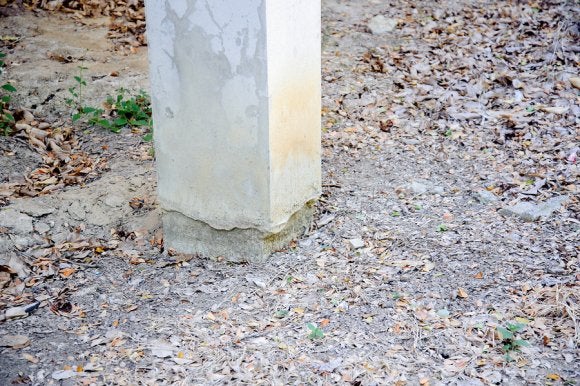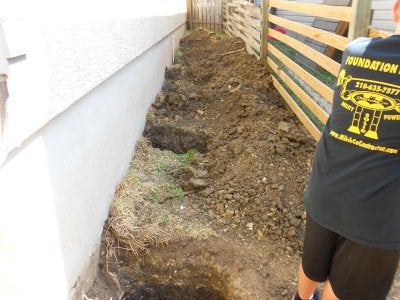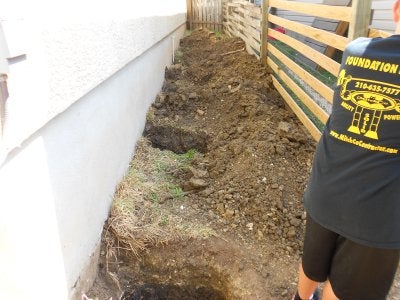-
See MitchCo Answer Your Questions About Foundation Repair
What is soil settling? What are the signs of foundation damage? What does a “bad” foundation look like? What causes foundation problems in the first place? What’s hydrostatic testing? What does a foundation examination entail? These are just a few of the common questions homeowners have regarding foundation repair. Luckily, MitchCo owner Edward Mitchell answers these and other questions in this clip from a segment on Fox Daytime @ 9.
Still have questions about foundation repair? Call the foundation experts at MitchCo today and get answers to all the questions you have. You can get in touch with a foundation repair contractor in San Antonio by calling (210) 787-2965 . You can also contact MitchCo online if you have questions or would like to request a free estimate on foundation repair for your home or business.
-
The Link Between Soil Composition and Foundation Stability

If you recognize any of the warning signs of foundation damage, including staircase cracks on the walls and doors or windows that constantly get stuck, you may be wondering what’s caused your home’s sturdy concrete foundation to break. Ironically enough, it might be something as seemingly inconsequential as the soil beneath your home. Although the soil itself doesn’t harm the foundation, the shifting and settling of the earth beneath your home can cause the foundation to rise and fall in response. Poor drainage can increase the moisture content in the soil directly beneath your home, which can lead to more soil movement and subsequent foundation damage.
The good news is that foundation instability and damage can be corrected with the help of a licensed foundation repair contractor in San Antonio . Soil stabilization and drainage correction are two of the steps foundation repair contractors can take to prevent future foundation problems, at least those resulting from soil expansion and deterioration.

-
Questions to Ask Before Hiring a Concrete Contractor
Whether you’re planning a new sidewalk, driveway, patio, pool deck, or even a new home addition that required a slab foundation, you can save a lot of time and money in the long run by hiring a concrete contractor to complete the job for you. In some cases, depending on the size and scope of the project, a licensed concrete contractor might be required to make sure your home is up to the state, local, and/or federal building codes. But with so many concrete contractors in San Antonio, how do you know which one to hire? Here are some good questions to ask that can help you narrow down your list.

What types of concrete services do you provide?
First and foremost, make sure that any concrete contractor you are considering for the job has experience with the particular concrete work you need to be done. For example, if you need to have a driveway slab laid down, make sure the contractor you hire has done concrete driveway installations in the past.
Are you licensed and insured?
Perhaps the most important question of them all is whether or not a contractor is licensed and insured. Licensure is your signal that the contractor is legitimate and answers to the state. You can search the Texas Department of Licensing and Regulation (TDLR) to find out whether a contractor has an active license or not. Insurance should give you peace of mind that should any damage or personal injuries occur during the job the contractor’s insurance company will shoulder the financial burden, not you.
Do you offer free estimates?
Although the final cost can change, it’s nice to get an estimate up front so you can start budgeting for the project and see which contractors are overcharging for a particular service. Be wary of any residential concrete contractors in San Antonio who refuse to offer estimates, as this is typically a practice associated with contractors who like to take advantage of unsuspecting homeowners after the job is done.
-
Taking a Look at French Drain Installations
 If you have a water intrusion issue in your basement, an unusually waterlogged front yard or backyard, or a yard that slopes toward your home, you should consider installing a French drain. Contact your local foundation repair contractor to learn more about French drain installation in San Antonio . Also, be sure to discuss with your professional about other waterproofing methods for your basement.
If you have a water intrusion issue in your basement, an unusually waterlogged front yard or backyard, or a yard that slopes toward your home, you should consider installing a French drain. Contact your local foundation repair contractor to learn more about French drain installation in San Antonio . Also, be sure to discuss with your professional about other waterproofing methods for your basement. 
What a French Drain Is
Water can damage or weaken your home’s foundation. A French drain can be used to protect it from water intrusion and damage. Basically, a trench has been dug that slopes away from your home. Then it’s filled with a base layer of crushed rock or gravel. A perforated pipe, which is meant to direct and channel ground and surface water away from your home’s foundation, is laid on top of the base and is then filled around with more gravel.
Installing a Shallow Drain
If you have surface water issues, install a shallow French drain, which can effectively channel surface water around areas that have become overly wet. These shallow drains are positioned directly above wet areas that need to dry out. If trees or shrubs come into contact with a French drain’s path, solid pipes are used rather than perforated ones. Tree roots can grow into perforated pipes and clog them.
Installing a Deep Drain
If water is infiltrating your basement, install a deep French drain, which should run around the perimeter of your home near its foundation’s footings. This drain effectively stops water from entering your basement. It’s easiest to have this drain installed at the same time a home is being constructed. If you need to have this drain installed around an existing home, it can be quite costly due to the amount of work involved, and potentially needing to have decks, walkways, or landscapes that get in the way demolished.
Installing an Interior Drain
Like a deep French drain, an interior drain stops water from entering your basement. It’s a much better waterproofing method than a deep drain. If your basement is unfinished, the installation can be a breeze. If your basement is finished, your foundation repair specialist has to cut and remove drywall in order to install the interior drain. This method utilizes a collection tank and a sump pump to redirect water from your basement.
RECENT POSTS
categories
- Uncategorized
- Foundation Repair San Antonio
- Cracked Foundation
- Foundation Information
- Foundation Repair
- Contractors
- Drainage Maintenance
- drainage correction professionals
- Foundation Cracks
- waterproofing services
- home foundations
- Drainage Correction services
- Sagging Lintels
- Lintel Repair
- Drooping Lintels
- [INFOGRAPHIC]
- Drain Installation
- Foundation Damage
- Poor Water Drainage
- Concrete flatwork installation
